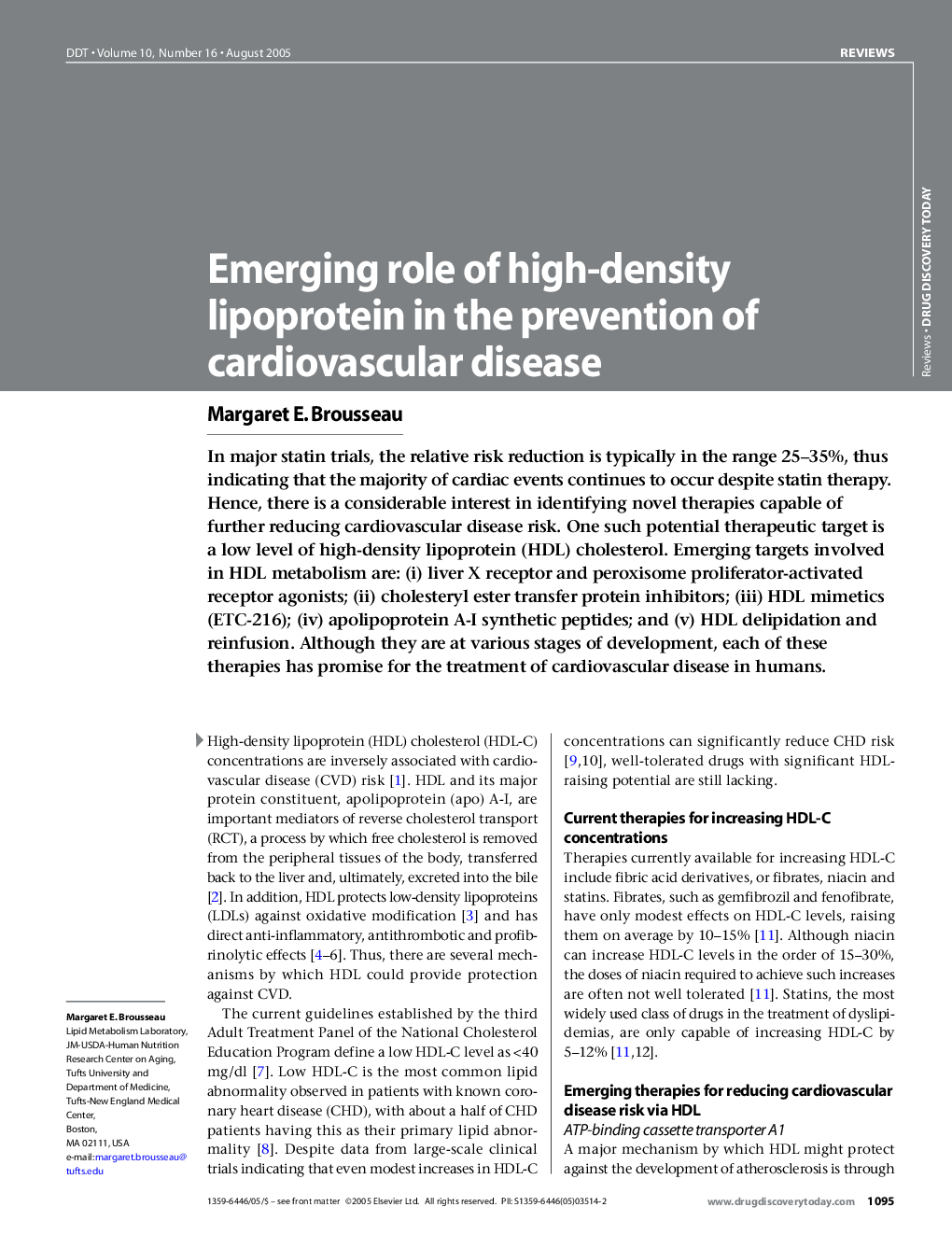| Article ID | Journal | Published Year | Pages | File Type |
|---|---|---|---|---|
| 10886167 | Drug Discovery Today | 2005 | 7 Pages |
Abstract
In major statin trials, the relative risk reduction is typically in the range 25-35%, thus indicating that the majority of cardiac events continues to occur despite statin therapy. Hence, there is a considerable interest in identifying novel therapies capable of further reducing cardiovascular disease risk. One such potential therapeutic target is a low level of high-density lipoprotein (HDL) cholesterol. Emerging targets involved in HDL metabolism are: (i) liver X receptor and peroxisome proliferator-activated receptor agonists; (ii) cholesteryl ester transfer protein inhibitors; (iii) HDL mimetics (ETC-216); (iv) apolipoprotein A-I synthetic peptides; and (v) HDL delipidation and reinfusion. Although they are at various stages of development, each of these therapies has promise for the treatment of cardiovascular disease in humans.
Keywords
Related Topics
Life Sciences
Biochemistry, Genetics and Molecular Biology
Biotechnology
Authors
Margaret E. Brousseau,
